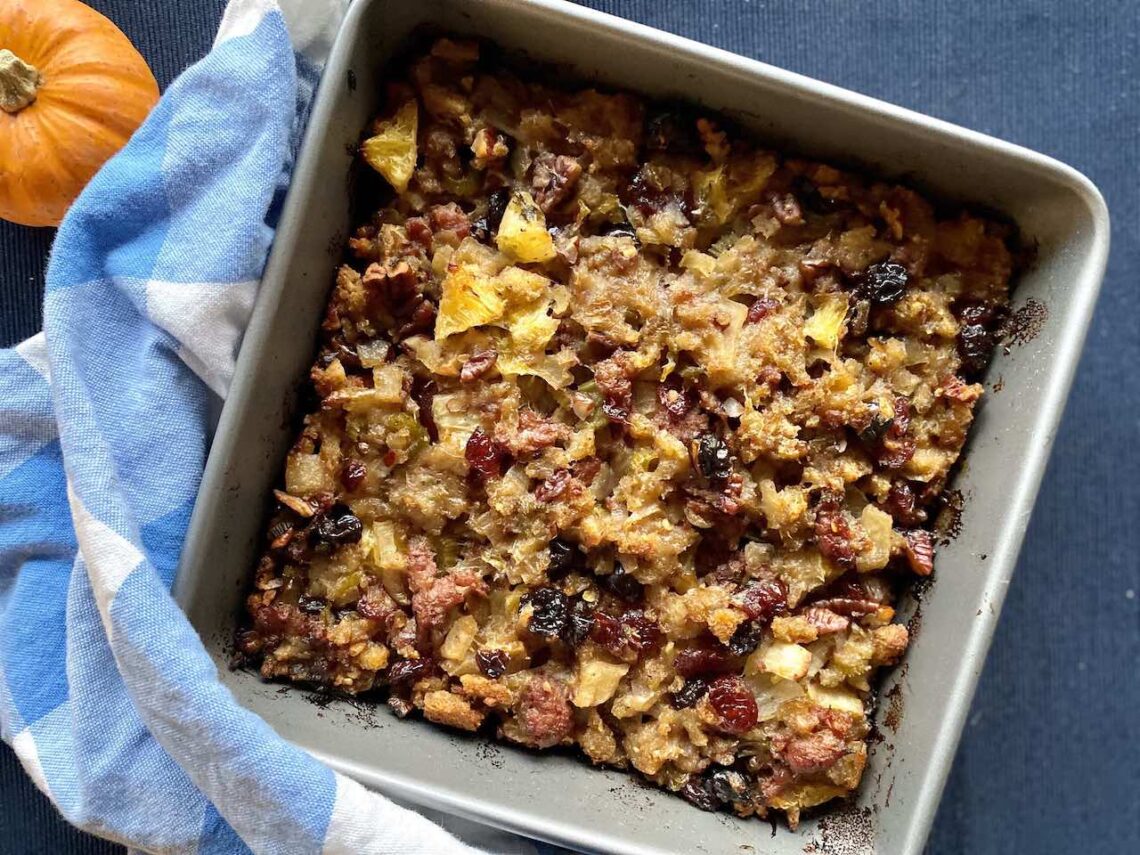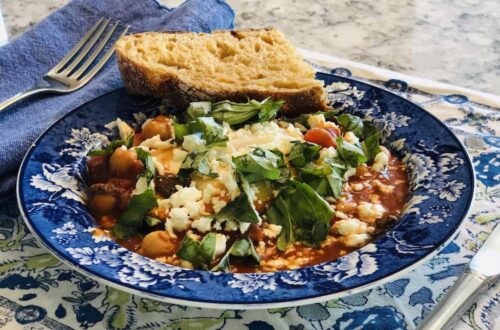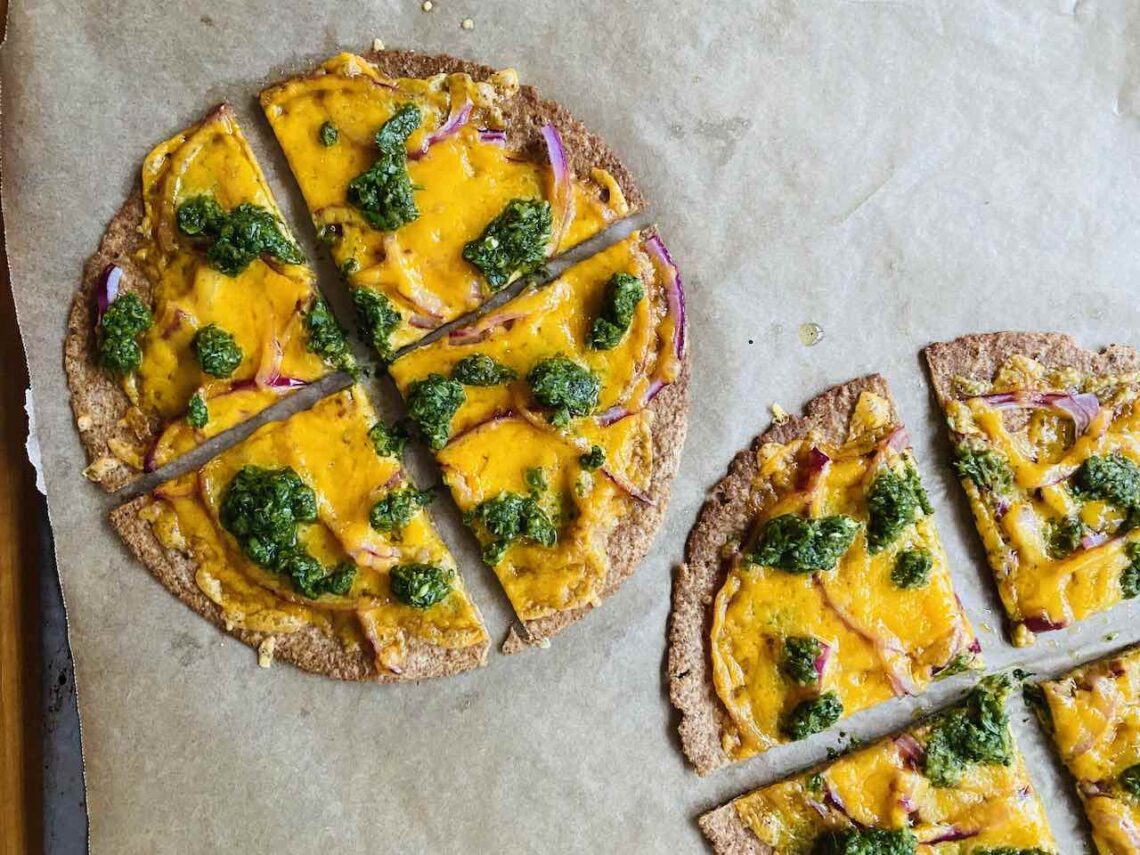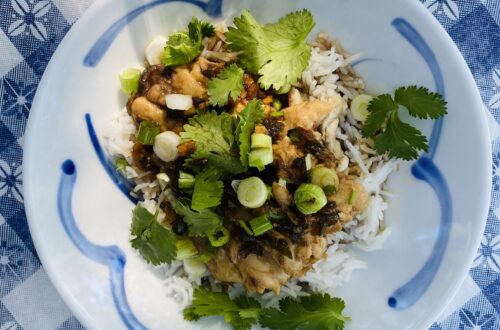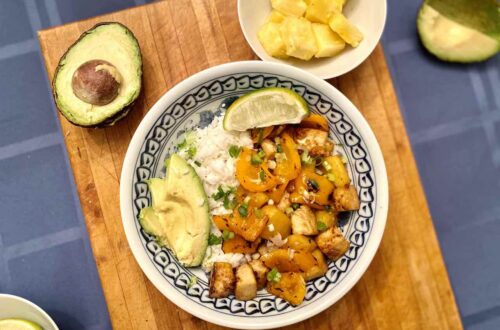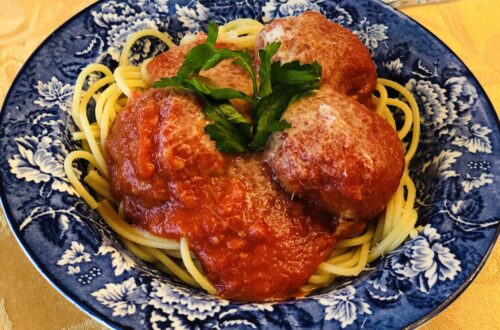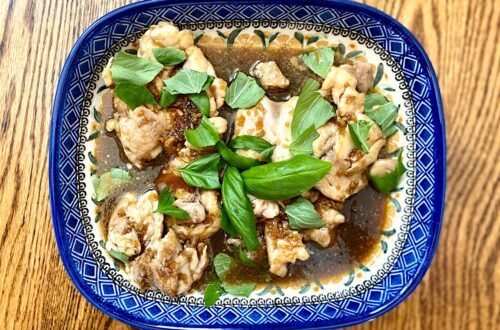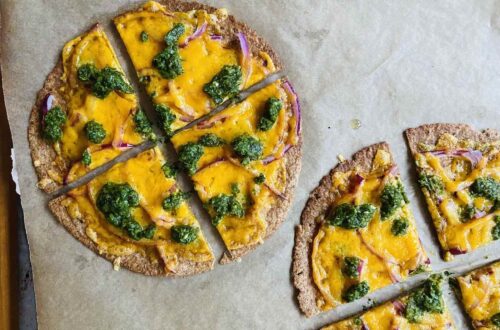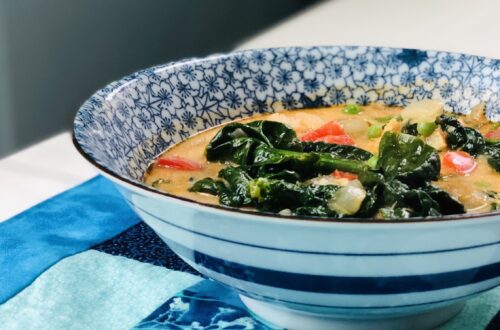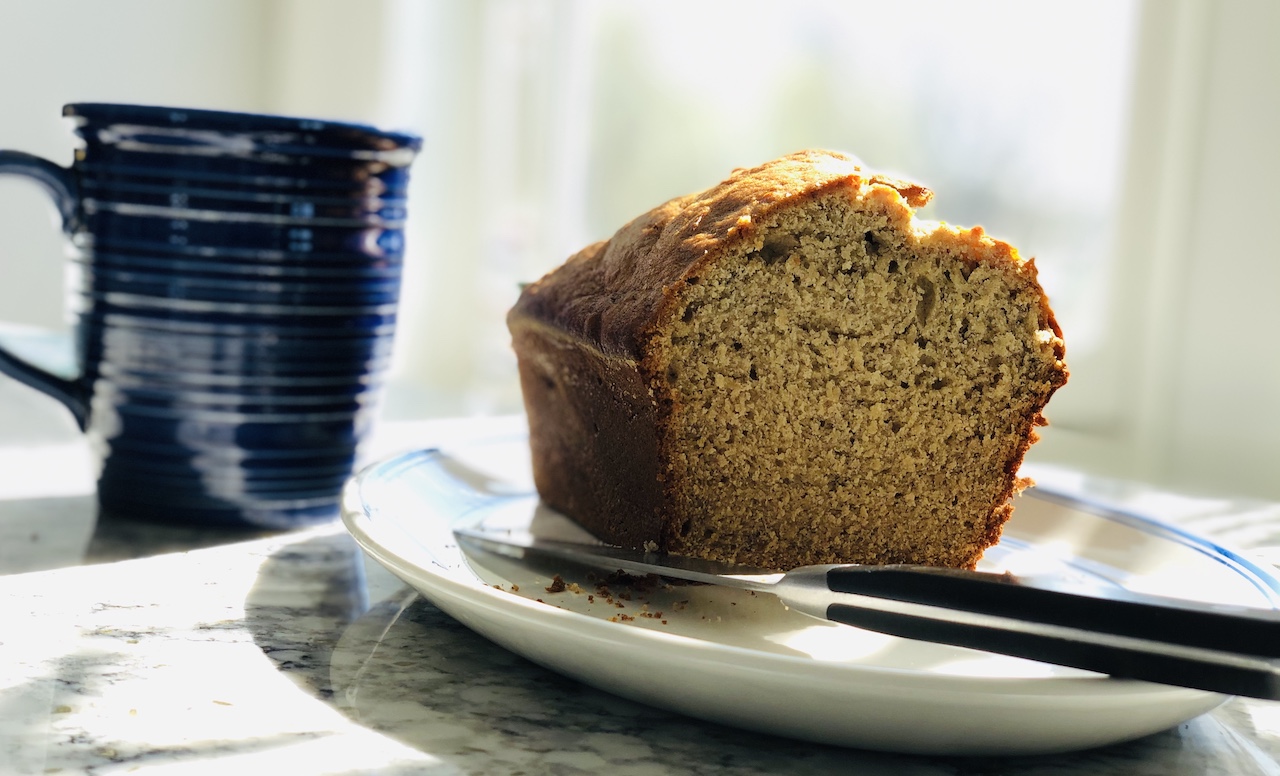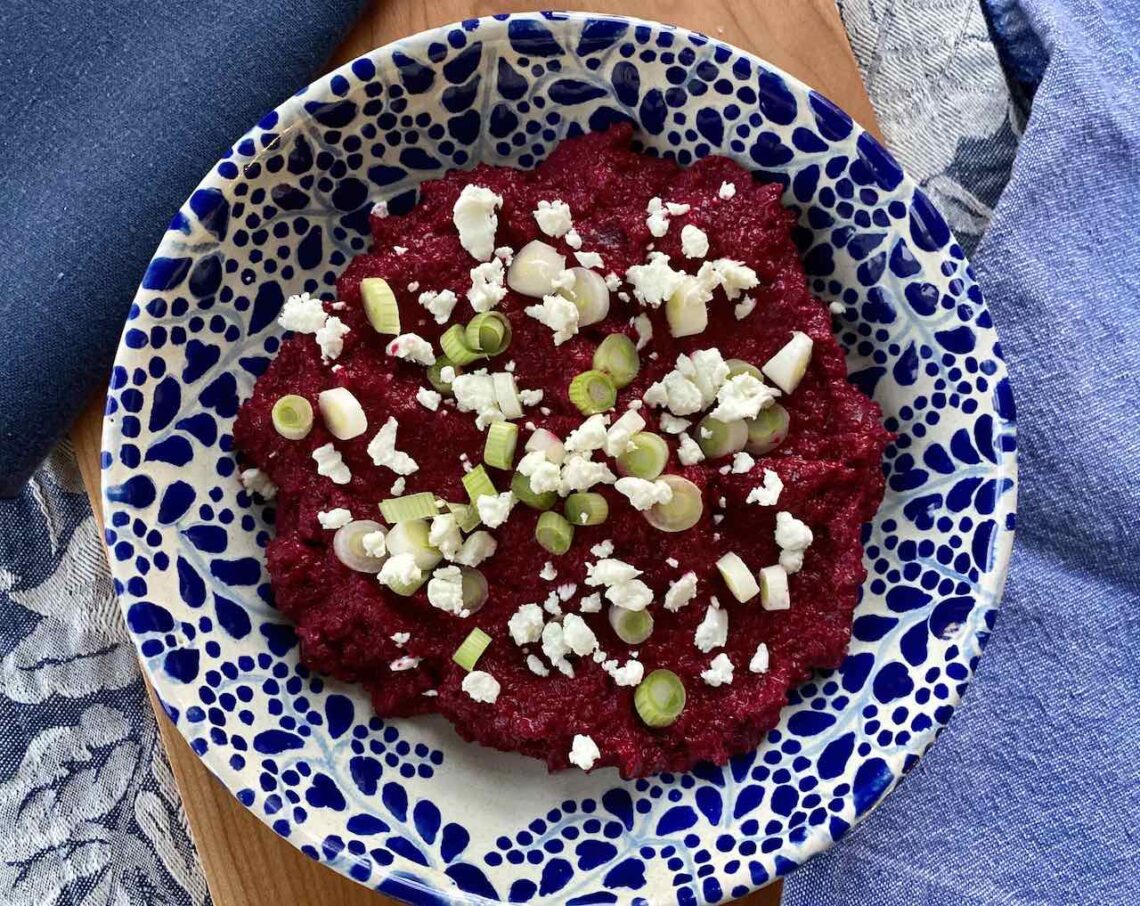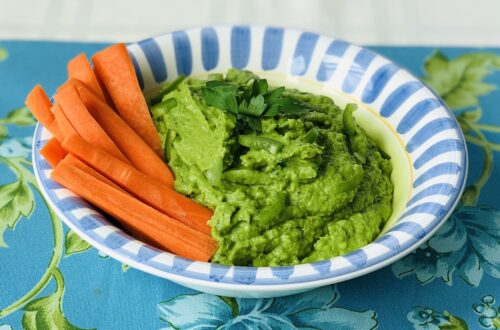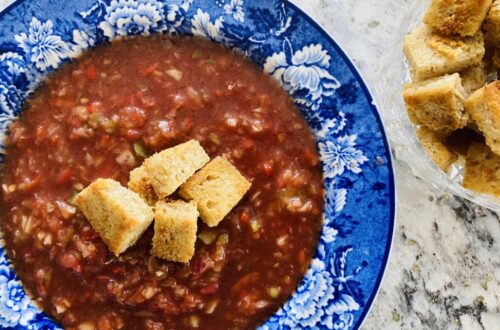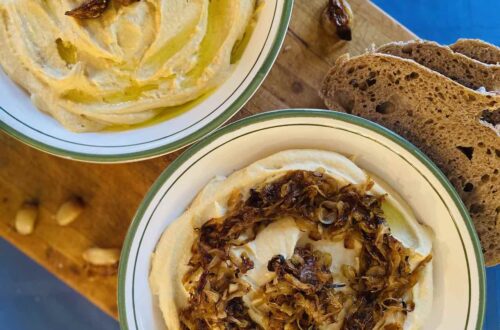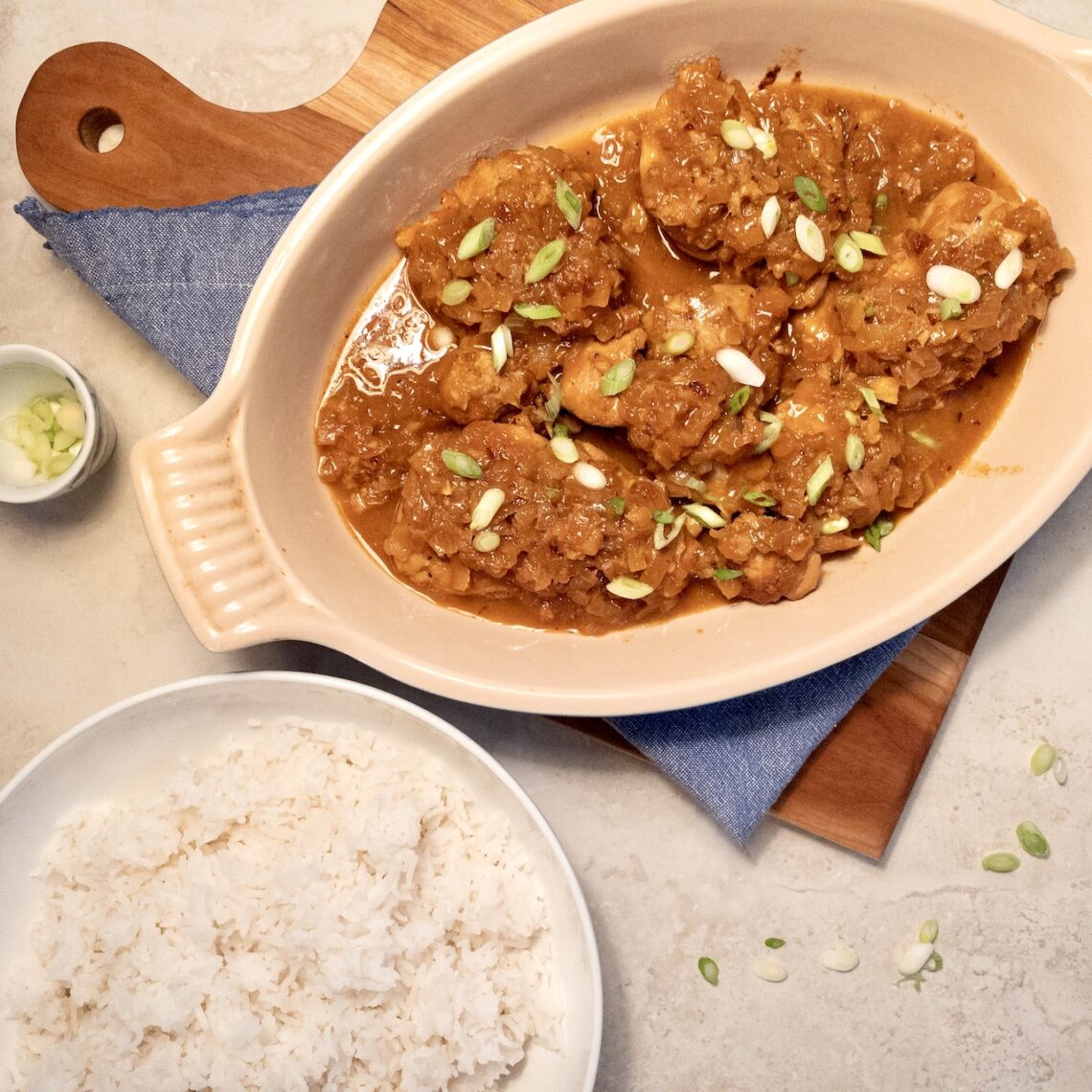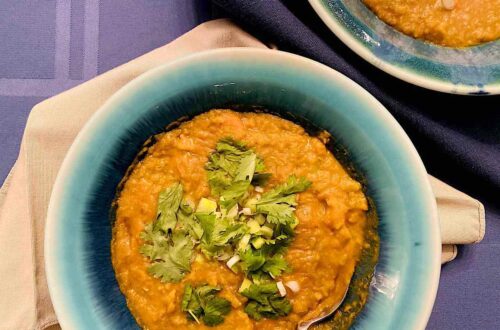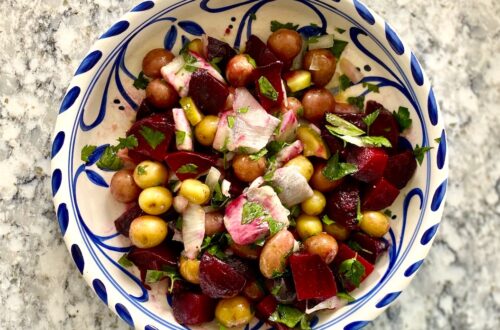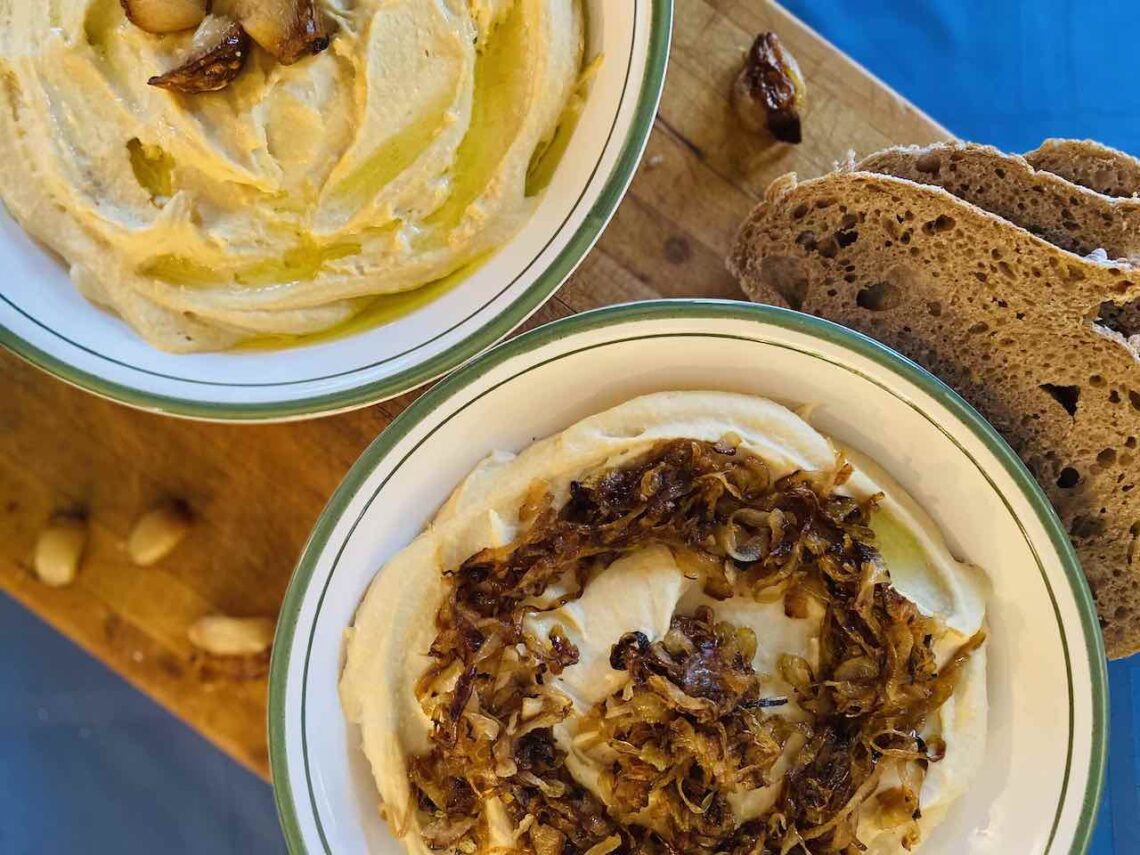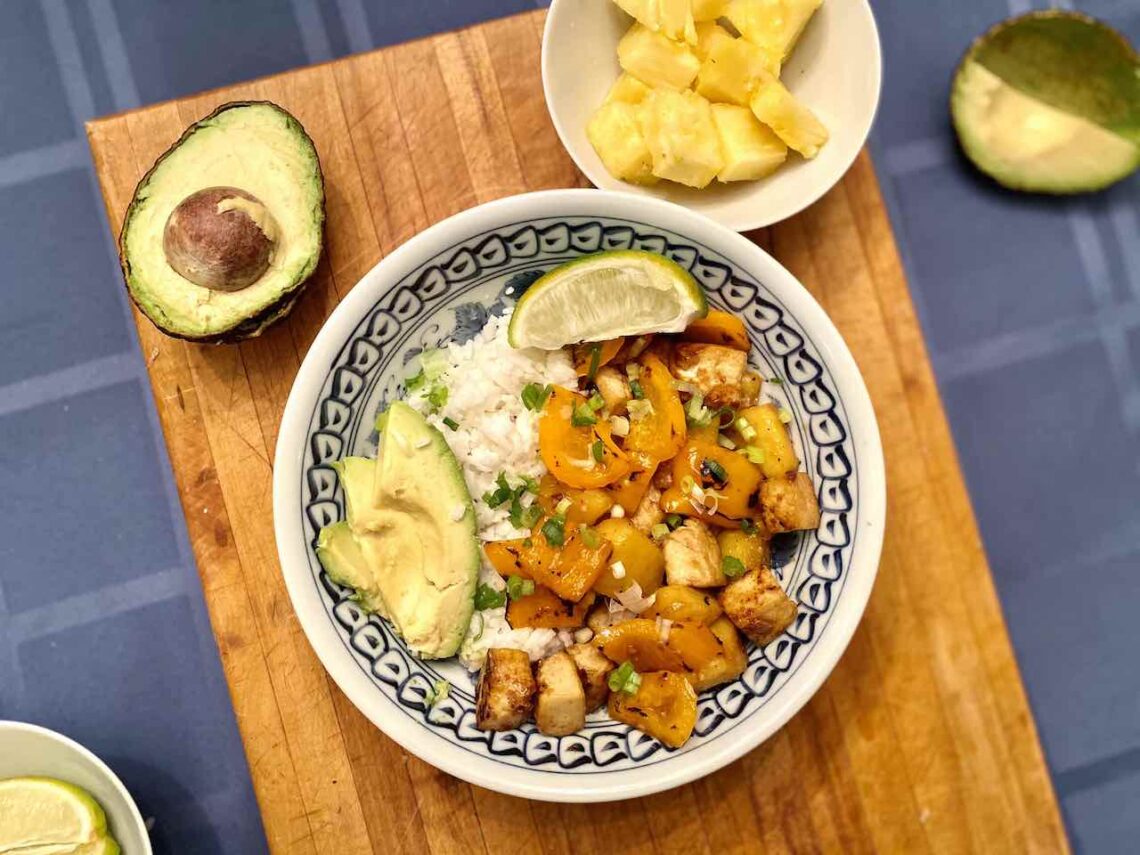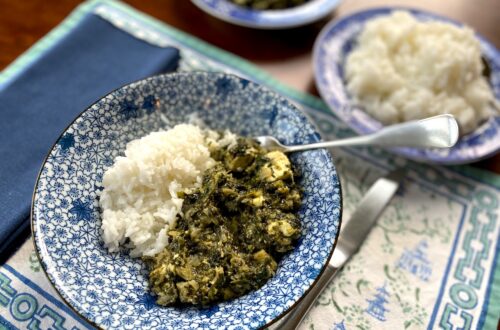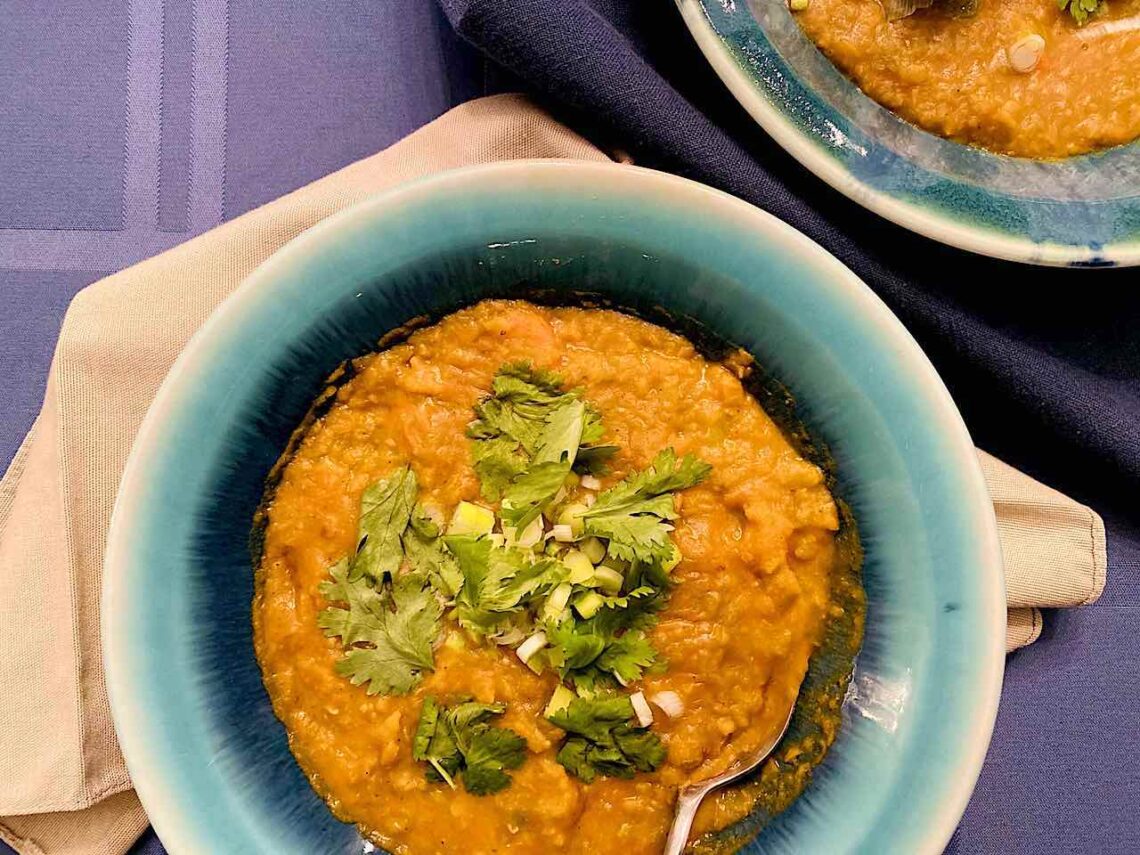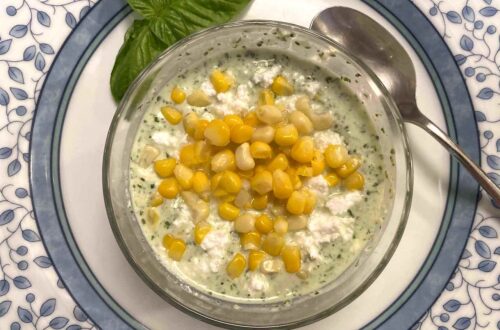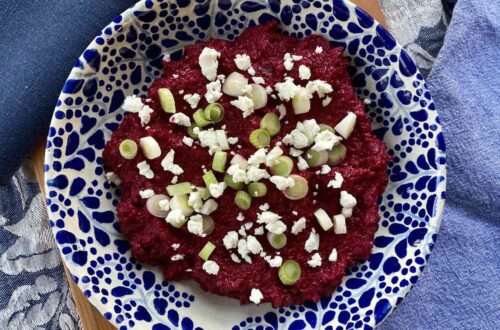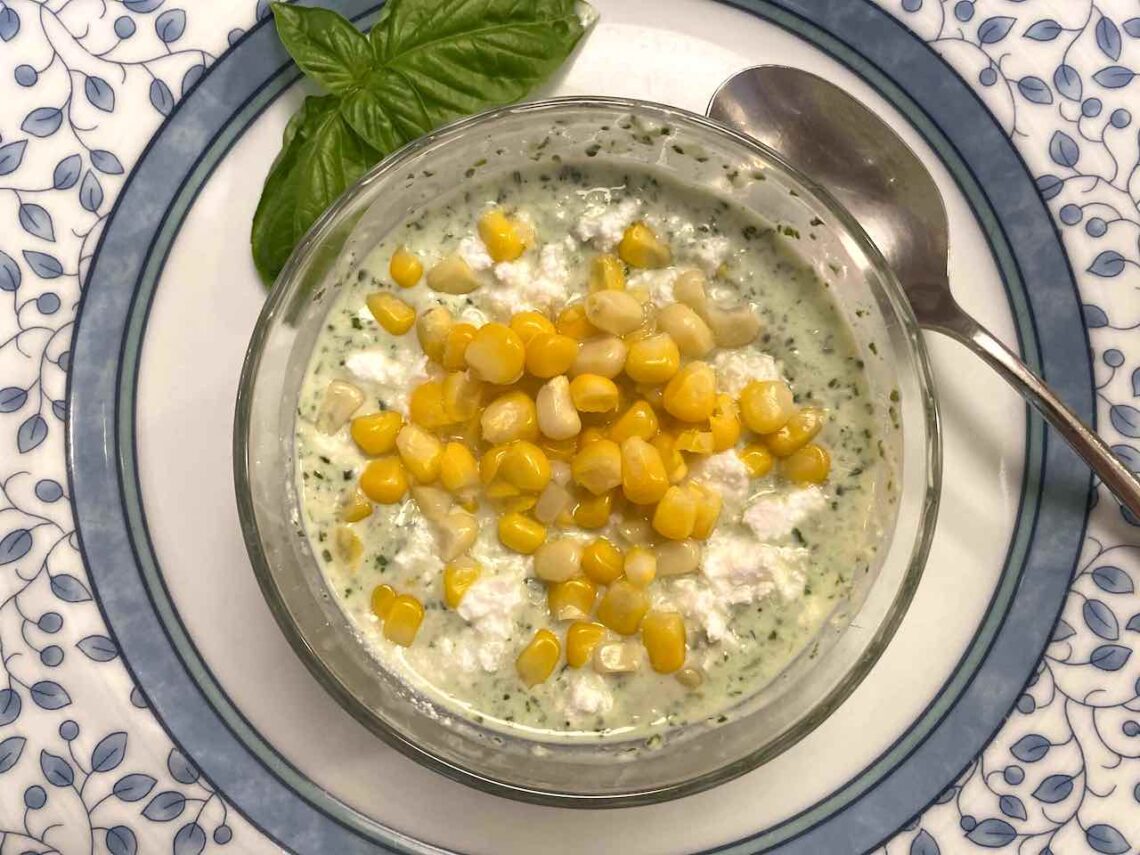-
The Very Best Thanksgiving Stuffing
I absolutely love Thanksgiving, probably because it’s only about eating delicious food with friends and family. Unfortunately, I’ve missed Thanksgiving for most of the past decade. Between living in Berlin and traveling to Geneva for conferences (I can’t complain about either), there haven’t been too many years that I’ve been in the US and able to cook. But that hasn’t stopped me from starting Thanksgiving 2.0, the Second Night of Thanksgiving, or Belated Thanksgiving as we call it – a night weeks after Thanksgiving when I invite friends over and cook an entire Thanksgiving meal.
This stuffing is key to my Thanksgiving dinner, whenever it takes place. I’ve been making variations of it since I was a teenager, but this is a more interesting version with more tartness to balance the sweetness of Thanksgiving food. This recipe can easily be doubled and should be if you are cooking for more than immediate family. But be warned that a double recipe makes enough stuffing for a small army.
-
Roti Pizza (aka Whole Wheat Tortilla Pizza with Cheddar and Cilantro Chutney)
Every once in a while I come across a recipe that feels as familiar as if I’ve been eating it my whole life. These roti pizzas (which I usually make on whole wheat tortillas) from Priya Krishna’s cookbook Indian-ish, combine the types of food I loved as a teenager, a mixture of grilled cheese sandwiches and Indian food from Rajun Cajun, the best (and only) Indian takeout spot in Hyde Park. These pizzas – with the brightness of red onion, the saltiness of sharp cheddar cheese, and the tang and spice of cilantro chutney – bring together my favorite childhood flavors in a weekday work-from-home lunch (or dinner or snack).
One underrated ingredient in this – and most – recipes is salt. Salt is fascinating, such a minor but important ingredient in all food. It is key to everything we eat, yet we rarely think about it. It not only gives food its own salty flavor, but it also brings out the flavor in other ingredients. James Beard once asked: “Where would we be without salt?” To which Samin Nosrat answered: “Adrift in a sea of blandness.”
-
Spicy Sweet Potato and Broccoli Rice Bowl
I love recipes that are adaptable – that can be made with whatever vegetables you have at home, that can be baked or pan-fried depending on your mood, and that always end up tasting delicious – even when you set off the smoke alarm while cooking. I now bake the vegetables, which is (1) easier, and (2) hasn’t yet set off a smoke alarm.
This recipe is from East, author Meera Sodha’s amazing collection of flavorful vegetarian recipes. (Check out her column in The Guardian for more great recipes.) I’m obsessed with this cookbook – as many people who I’ve evangelized about it to know. Every recipe is tasty and flavorful, but also simple, with never more than a dozen ingredients. It’s vegetarian food that never makes you feel like you’re missing meat.
-
Chocolate Chocolate-Chip Cherry Cookies
Every once in a while, you stumble upon a special cookie recipe. It’s the kind that, once you’ve tasted it, you suddenly know: these cookies will forever be part of your core toolbox of cookies, just waiting to be baked at a moment’s notice. These cookies – chocolaty, gooey, mixed with a tartness from the cherries – have served me well since I discovered them. They satisfy a deep chocolate craving, whether that’s at a picnic, a dinner with friends or as a delightful snack during the low point of the work-from-home afternoon or after a long summer evening walk.
I have also been searching for the right recipe to once again dive into the cocoa supply chain. Yasmin Khan’s recipe for this recipe is perfect, since she was a human rights campaigner before becoming a cookbook author. While issues around trafficked and forced child labor in the West African cocoa industry generally make the headlines, deforestation is another important, if not as widely known, issue in the cocoa sector.
-
Puréed Beet Dip
There are some cookbooks that suck you in, instantly inspiring you to make every single recipe in the book. Jerusalem, by Yotam Ottolenghi and Sami Tamimi, is one of these. (I’m certainly not the first person to feel this way.) Recipes for butternut squash with tahini spread, chicken with caramelized onion and cardamom rice, and khachapuri called my name. But it was the recipe for puréed beets with yogurt and za’atar that really caught my eye. I love beets. I’ve always found pickled beets in a salad to be a delightful surprise, and roasted beets are sweeter and deeper. Since I found this recipe, I’ve made this dip at least five times. Every time it disappears within a day or two.
I know that beets can be a bit scary to cook with. Yes, they bleed and can get on everything (your shirt, the table, the chair, the counter, your sweater). And yes, roasting them takes a while. But really, you just throw the beets into a pot (preferably a Dutch oven, but any pot with a lid or aluminum foil will do), add some olive oil, and let them do their thing. You may want to turn them once or twice, but that’s it. (And if that still sounds too hard, just use canned beets.) The rest of the recipe is a breeze – add everything to a food processor and let it whirl!
-
Dorie’s Sweet Chili Chicken Thighs
In 1946, the United States Department of Agriculture launched the “Chicken of Tomorrow” contest. The goal of the contest was to produce “one bird chunky enough for the whole family—a chicken with breast meat so thick you can carve it into steaks, with drumsticks that contain a minimum of bone buried in layers of juicy dark meat, all costing less instead of more.” Contestants had a year to breed and submit a chicken that fit this description.
This contest, thought up by the head of the largest supermarket chain of the time, the A&P, changed the trajectory of American chicken farming. Before the 1940s, chickens were often quite small and scrawny, with little meat on them. The fact that they laid eggs meant that chickens were often worth more alive than on the dining room table. Only when chickens were no longer able to lay eggs would a family eat them – and even then it was usually for a special occasion.
-
Hummus Two Ways
As 2020 comes to an end, I want to close out the year on an upbeat note. It’s been a difficult time for so many, and we are all eager to start the new year – one in which vaccines will be rolled out, the terrible orange man will no longer be in charge of the United States, and we can all (eventually) gather with friends and family once again. While this New Year’s will be unlike any other, I think we all owe it to ourselves to celebrate the hell out of the end of 2020.
This recipe – for hummus topped with caramelized onions and roasted garlic – is part of my New Year’s plan, which includes other fun finger foods: stuffed mushrooms, bacon-wrapped dates, and cheese and prosciutto. This recipe is for the famous hummus from the cookbook Jerusalem, by Yotam Ottolenghi and Sami Tamimi, the Israeli-Palestinian duo that have made ingredients like tahini mainstream for American and European cooks. This hummus is superb, less like the packaged hummus from a grocery store and more like the hummus from my favorite hummus restaurant in Berlin (Azzam, I hope you are still around when I get back to Germany) or the hummus you find in Palestine. Plus, for those of you who already make fresh hummus and follow recipes that involve carefully peeling the skin off of each chickpea, this recipe eliminates that hassle.
-
Sweet and Sour Tofu and Pineapple
One evening a couple of years ago, I trudged through the snowy and muddy New England streets and arrived at my friend’s house for dinner, where she welcomed me with a dish that tasted like summer. The day had felt interminable, but then this wonderful friend was there with love, laughter, and a delicious dinner. As someone who at the time lived mainly on meatballs, Bolognese sauce, and a lot of eggs (fried, soft-boiled, scrambled, in ramen, on top of tortillas, on top of more tortillas), this fresh tofu dish was the best gift I could have asked for.
As the days get darker and colder and social distancing continues unabated, we all need a way to pretend that it’s summer, even if just for a few minutes. That’s what this dish does. It combines crispy tofu with pineapple and a sweet and sour sauce that is both cozy and reminiscent of warmer times of year. This dish has recently become a staple in my family and has convinced certain people to eat – and even enjoy – tofu.
-
Red Lentil and Split Pea Soup
Back over the summer, I had big plans for posting about Thanksgiving foods. Thanksgiving is one of my favorite holidays, and I was going to embrace it like never before. I was planning to ask a friend for her recipe for bourbon-chocolate-pecan pie, post my favorite stuffing recipe (with hot Italian sausage and maple syrup), and look into the supply chain of cranberries. Unfortunately, none of that happened. (Things like work, Covid-19, and the election got in the way.) But I’m back, planning to post more regularly again, and wanted to restart with a warm soup for the cold December evenings.
I don’t know when I first made this soup, but it puts all other lentil soups to shame. I once made it for my friend Drew, who liked it so much that years later he still mentions it when we talk. (He also went out and bought lentils to make the soup – pounds and pounds of lentils. Two years later the remains of these lentils had started to sprout…but we made the soup and it tasted just fine with sprouted lentils.) What I’m trying to say is that if you are looking for a cozy pandemic soup, this is it.
-
Chilled Cucumber Soup
As August turns to September, I am trying to hold onto summer as much as possible. The pandemic summer has meant long walks and, more importantly, lots and lots of picnics. With picnics the new norm for social events, the type of food I want to eat has expanded. Pre-pandemic, I likely would not have given this recipe a second glance. But the pandemic has made me more adventurous. I have learned to love food processors, appreciate anchovies, and have rethought what portable picnic food includes. Perfect for a picnic or hot night, this recipe is creamy and a little bit spicy, while the corn adds a sweetness to it that matches the cucumber and dairy base. If you’ve spent the summer eating gazpacho and need a new cold soup for September picnics, try this.
This soup, with its yogurt base, is the perfect opportunity to discuss dairy production, including the less appetizing parts of it. (Warning: this post is a bit manure-heavy. Consider reading this at a time when you are not eating.) There are many problems related to dairy production: the low price paid for milk (which squeezes smaller farmers and leads to increased “efficiency,” i.e. larger factory farms), the cycle of breeding cows for dairy production, dairy farming’s environmental impacts, and the low wages paid to a primarily immigrant workforce. While I wish I had space to discuss all of these issues, this post focuses on the environmental impacts – specifically the production of greenhouse gases and the threat of contaminated groundwater from manure.
